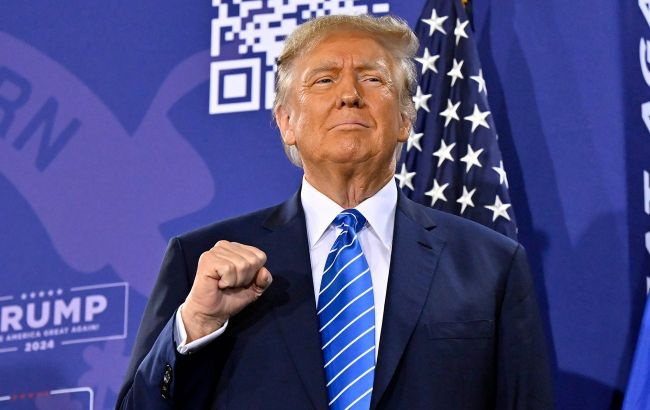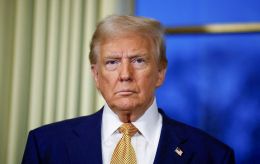Four years later: How Trump’s victory in election gets confirmed and whether protests occur
 Donald Trump (photo: Getty Images)
Donald Trump (photo: Getty Images)
The US Congress is set to officially confirm Donald Trump as the winner of the presidential election. This will be the final formal step toward his presidency before the inauguration.
RBC-Ukraine explains how this process will unfold and whether there is a risk of unrest similar to that of 2021.
CONTENT
- How the approval procedure takes place
- 2021 riots
- What lessons did the US government learn from the events of 2021
How the approval procedure takes place
Today, US lawmakers and senators will gather for a joint session of Congress to certify the results of the presidential election.
On one hand, this is a purely formal procedure related to the specifics of the electoral system. The election is formally held separately in each state, where electors are chosen who then elect the president.
The electors voted in their respective states on December 17 last year. After that, their votes are sent to Congress, where, under the chairmanship of the US Vice President, the votes of the Electoral College are tallied and the results are announced. During the session, sealed certificates of the electors' votes from each state will be opened. Typically, this process takes about half an hour and is conducted calmly.
On the other hand, after the previous election in 2021, the certification of the winner led to unrest, the storming of the Capitol, and even fatalities.
2021 riots
In the 2020 election, Donald Trump lost but did not concede defeat, claiming that Joe Biden had stolen his victory. Furthermore, in numerous statements, Trump and his allies emphasized that January 6, 2021, was the last chance to overturn the results of the November election and keep the presidency in his hands. Trump's team attempted to challenge the election results in key states through legal means. Additionally, some of his supporters tried to disrupt the Congressional session. Ultimately, in Trump's view, it was then-Vice President Mike Pence who could prevent the certification of the results.
Ahead of the Congressional session, Trump held a rally a few kilometers from the Capitol to protest the potential election fraud.
"We will never give up. We will never concede. Our country has had enough. We will not take it anymore," he said at the rally.
Although Trump did not directly call for the storming, his supporters broke through the security perimeter around the Capitol at around 2:00 p.m. local time and stormed the building. Among them were armed individuals, and shots were fired.
Congress members were urgently evacuated to the Fort Lesley J. McNair military base. However, Vice President Mike Pence remained inside the building.
In the wake of public outrage, Trump urged his supporters to disperse and even deployed the National Guard to ensure security. Within a few hours, law enforcement began pushing back the protesters and cleared the Capitol Hill area, where Congress is located. A curfew was imposed in Washington. Afterward, lawmakers returned to the building. Importantly, Vice President Pence refused to be swayed by the protesters and ensured the certification of the election results.
The attack on the Capitol occurred for the first time since 1814 when British forces took and set it on fire during the war. During the unrest in Washington, 5 people were killed. At least 50 police officers were injured. 82 people were arrested, with 64 of them charged for violating the curfew.
The FBI classified the events as domestic terrorism. Several sentences were handed down to those involved in the storming. A criminal case was also initiated against Trump, but after his election victory, the court suspended the proceedings.
What lessons did the US government learn from the events of 2021
Following the events of 2021, Congress made several changes to the process of certifying election results. According to the amendments to the law, state executives are required to certify the election results in their jurisdiction at least six days before the votes are counted in Congress. The certification is final unless a state court or federal court rules otherwise.
Lawmakers also restricted the ability of congress members to object to the electoral votes. This is meant to ensure that no crowd attempting to disrupt the certification of election results in the future will be able to alter the outcome. Additionally, the law clearly defined the vice president's role in counting the votes as ceremonial.
Unlike in 2021, the current victory of Trump is not in question, even among his harshest critics. Democratic Party leaders have stated that they do not plan to interfere with the certification of Trump's victory, according to the Washington Post. Democratic leadership is even unsure whether rank-and-file members of the party in Congress will submit symbolic objections, which they had presented in previous years.
Politico, citing sources in the US Congress, predicts that Vice President and Trump's election opponent Kamala Harris will preside over the joint session of Congress to count the electoral votes, just as her predecessors did, without actively participating in the procedures of counting and certifying the results. Harris's aides stated that she intends to perform her duties as all vice presidents have before her, partly because it is the right thing to do, and also because it is the law.
Despite the calm situation, law enforcement agencies - Secret Service, Capitol Police, D.C. Police, and other services - plan to implement security measures similar to those during the Super Bowl (the National Football League's final match, which is a major sporting event in the US). Specifically, surveillance towers have been set up around the Capitol, and patrols have been strengthened.
After the certification of the election winner, the inauguration of the US president will take place on January 20. On the same day, Donald Trump will officially become the head of state and will finally gain full presidential powers.
The article references statements from Donald Trump, articles from CNN, Politico, and Washington Post.

